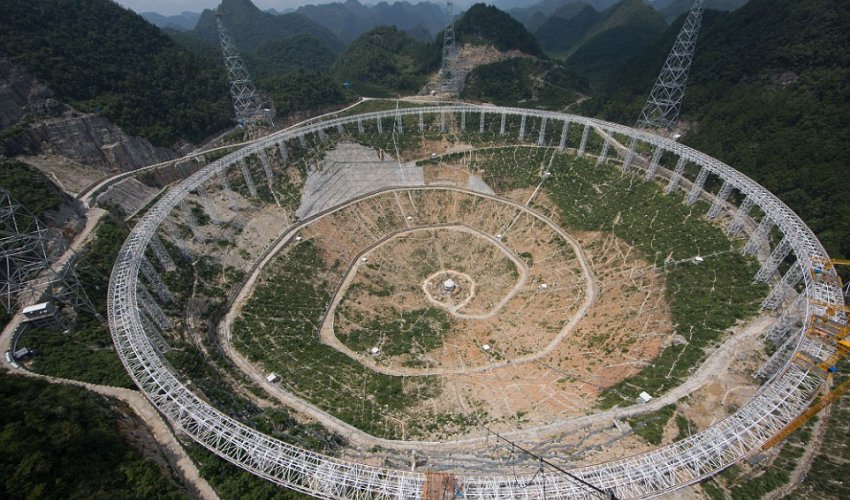China is building the world's biggest radio telescope

China is building the world’s largest radio telescope in Guizhou province, south west China.
Construction for the Five hundred metre Aperture Spherical Telescope, shortened to FAST, started in March 2011. The project is now expect to be completed by September 2016.
The gigantic radio telescope will cost approximately 1.2 billion Yuan (£120 million), making it the biggest astronomy project China has ever had.
It will allow scientists to get weaker radio signals from outer space, even further than our solar system, reported People's Daily Online.
Li Di, the chief scientist of the National Astronomical Observatories Chinese Academy of Sciences, said: ‘FAST will remain the best in the world in the next twenty to thirty years after it is completed.’
The idea of building this radio telescope was first proposed in 1993.
But it was only approved in 2006 after an international review and advisory conference on the science and technology of FAST.
It has been described as 'ears' and will help scientists listen to the universe.
Scientists from different fields, including physicists, geologists and astronomers, welcomed the construction of the new telescope as it will boost the human capacity to observe outer space.
Chen Xuelei, a physicists said that the data can help prove Einstein’s relativity theory once more data of gravitational waves can be retrieved from the telescope.
Li Di added: 'FAST can answer questions not only limited to astronomy but questions about humanity and nature. The scientific potential of this telescope is hard to predict.’
The telescope is made up of 4,450 reflective panels. The size of the dish will be about thirty football pitches.
Cables are attached to every reflective panels to control its coordinates.
The intricate design allows scientists to shift the dish to receive radio signals from different angles.
Li Di said : ‘The biggest challenge of this project is to calculate quickly and attached these data to thousands of computers to change the direction of such a gigantic telescope.
'We will be using lasers to pinpoint the exact coordinates, accurate to millimetres.’
(Daily Mail)






www.ann.az
Similar news
Similar news




































 Photo
Photo 



 Video
Video 

